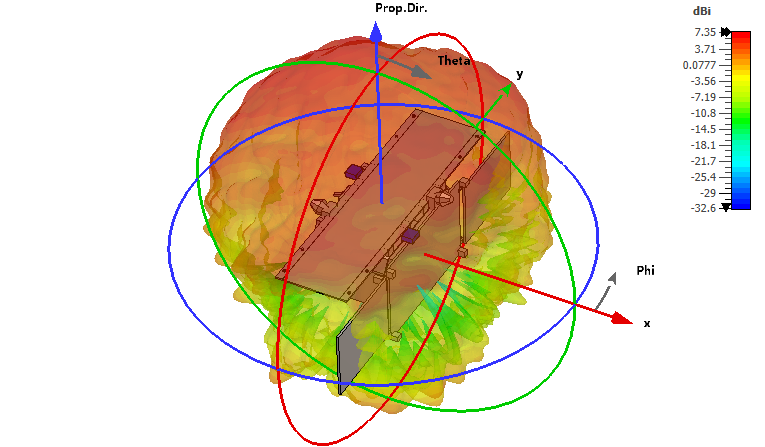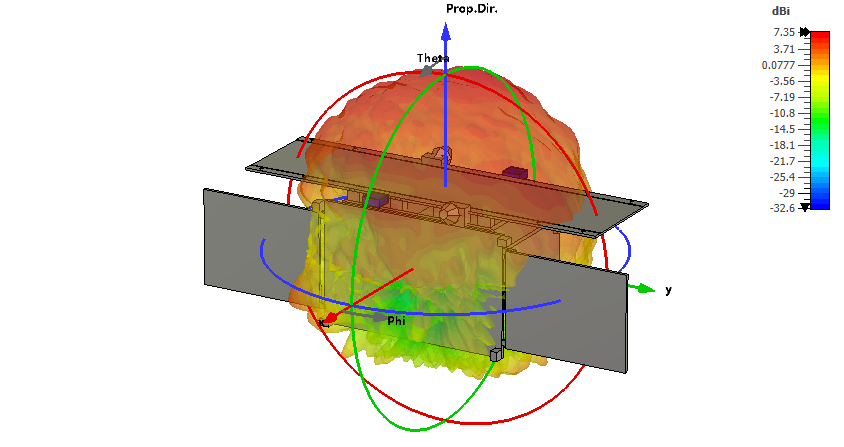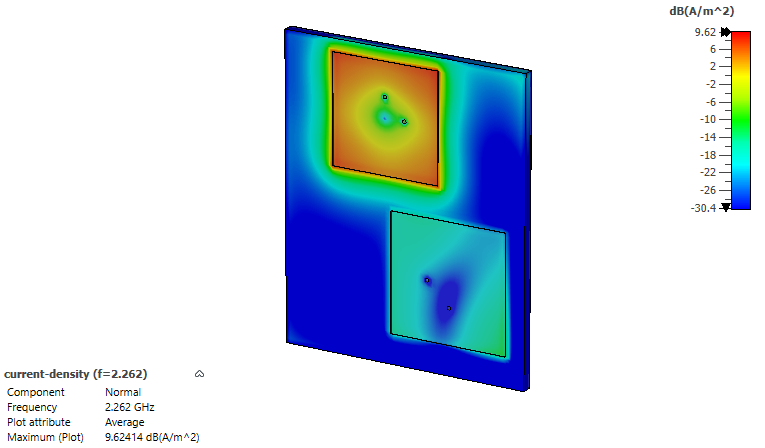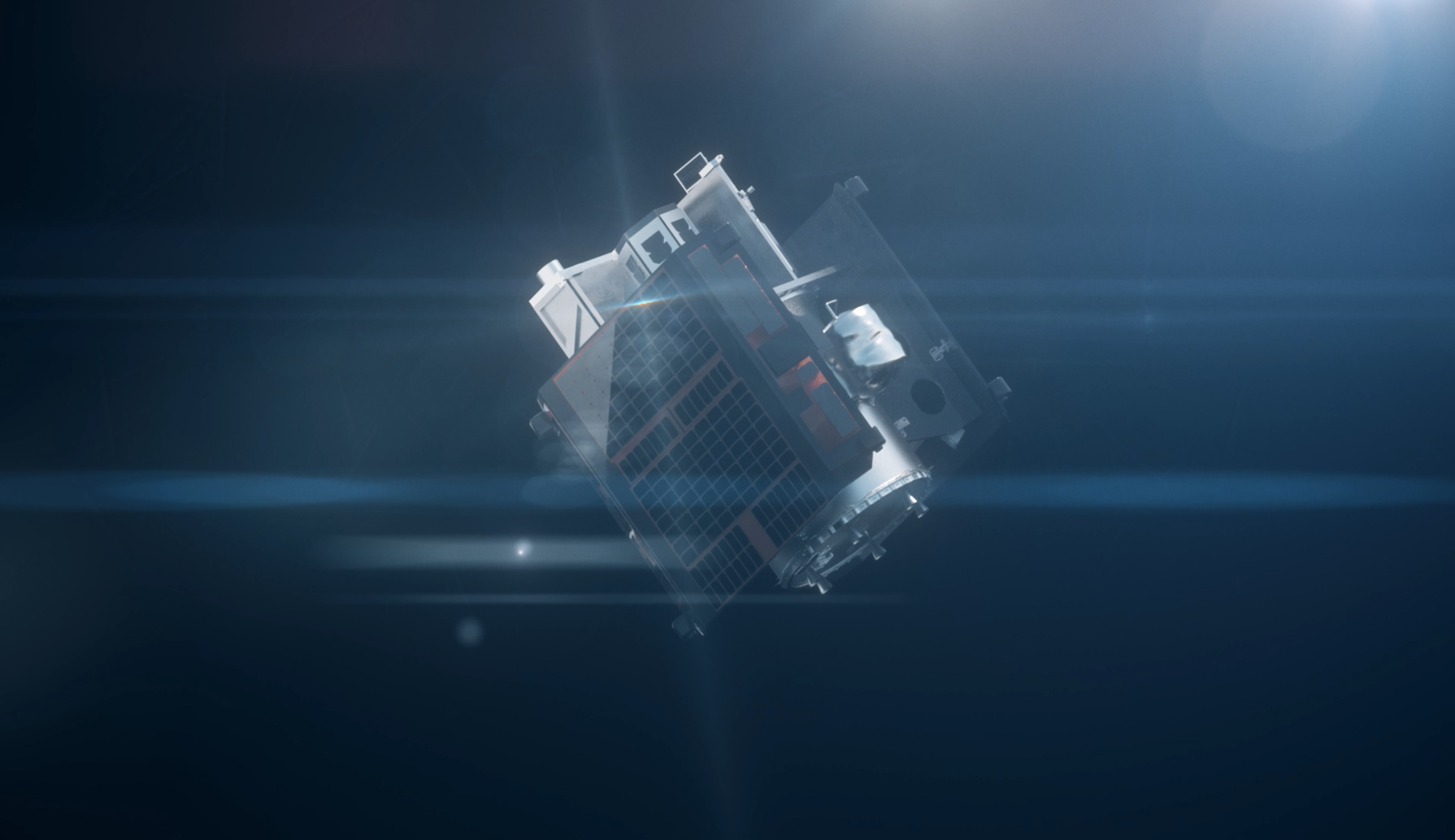D-Orbit
D-Orbit needed to build satellites faster while mitigating potential electromagnetic issues on smaller spacecraft. They selected CST Studio Suite® to run complex electromagnetic simulations accurately and efficiently and harness the power of cloud-based multi-core computing. As a result, they can now run comprehensive electromagnetic simulations to enable precise antenna placement with flexible workflows, achieving reliable communication, navigation, and data collection during space travel.
SIMULIA’s CST Studio Suite Helps D-Orbit Innovate Space Transportation and Logistics
The traditional space economy laid the groundwork for exploring and utilizing space-based resources, infrastructure, and services developed over the past few decades. Primarily driven by governments, the traditional space economy made substantial advances in satellite communication, Earth observation, scientific research missions, and more. The new space economy, however, is characterized by significant involvement of private companies and startups alongside national space agencies. This shift is fostering further innovations and new opportunities for commercial ventures in space while reducing costs.
The new space economy has inspired the creation of private companies such as SpaceX and Blue Origin that offer launch services to government agencies and corporations. These companies significantly reduce the cost of accessing space through their reusable rocket technologies. In addition, to keep up with the increasing demand for internet communications, there has been a surge in the deployment of satellite constellations, which are groups of satellites that provide continuous global coverage that single satellites cannot achieve. Space tourism is also making spaceflights available to private citizens.
This activity attracts significant investment from venture capitalists, government funding, and public-private partnerships, fueling the growth of startups and technological advancements in the new space economy.
Pioneering Technologies
D‑Orbit’s mission is to provide end-to-end solutions to improve new and traditional space businesses by streamlining in-space and on-ground operations with unique, innovative, and proprietary technologies. Established in 2011, the company was an early entrant into the burgeoning new space market. The company is recognized for its pioneering technologies and successful missions and stands at the forefront of the space logistics and transportation sector. D‑Orbit is dedicated to constructing a comprehensive space logistics framework designed to facilitate the seamless execution of satellite launches, transfer missions, on-orbit servicing and refueling operations, and the decommissioning of satellites at the end of their life cycle.
“If you think about a satellite, you have GNSS (Global Navigation Satellite System) receivers for pointing and maneuvering,” says D‑Orbit Senior Telecommunication Engineer Andrea Giannini, Ph.D. “These modules interact with GNSS constellations like Galileo or GPS systems to communicate where the satellite is in space.” There are also links for controlling the satellite from the ground and links for downloading data to Earth, not to mention other instruments or payloads equipped with electromagnetic-sensitive sensors. “It’s a big party of radio frequency (RF) sources,” jokes Giannini.
S-band antennas modeled in CST Studio Suite installed on the spacecraft. The results show the effect of the surrounding satellite on antenna pattern which creates blocking and distortion on the radiating envelope.


Managing Electromagnetic Interference
Satellites in low earth orbit encounter an abundance of electromagnetic interferences that can affect their operation and longevity. These interferences arise from the space environment itself, characterized by solar radiation, Earth infrared radiation, ionized plasma regions, geomagnetic storms, high-energy charged particles, cosmic sources and gamma-ray radiation, to name just some of the causes. Understanding and mitigating these challenges is crucial for the successful operation of satellites.
Failing to manage multiple sources of electromagnetic radiation to prevent interference can lead to malfunction or worse. “We have different antennas on-board provided by different suppliers or mission partners,” notes Giannini. “We know how they behave, but we don’t know how they interact with each other once on a spacecraft.” Furthermore, difficulties increase as industries demand smaller and smaller satellites, while radio-frequency performance requirements have remained the same or even increased, which adds complexity to interference issues. “From an electromagnetic perspective, these two concepts are in contrast; it becomes increasingly complex to ensure that powerful RF sources and sensitive receivers can coexist in a smaller space,” adds Giannini.
If you have a scale from 1 to 10 in terms of the complexity of tests, any test without CST would be a 10. With CST, we can mitigate the problems and put margins on thresholds, which can be critical.
Employing Powerful Simulation Tools
An RF system successfully transmits and receives radio waves for communication, sensing, imaging, and more. D Orbit uses Dassault Systèmes SIMULIA CST Studio Suite to conduct its electromagnetic simulation studies to design the complex RF systems in their innovative spacecraft. “CST Studio Suite enables us to create custom workflows dedicated to antenna placement to ensure that any radiating source does not interfere with the co-located receiver so that we can connect to Earth without any impacts or shadow zones,” reports Giannini.
Coordinating antennas to communicate without interfering with each other involves several strategies and techniques aimed at efficient spectrum usage and minimizing crosstalk between channels. A surprising number of factors can contribute to mitigate radio-frequency interference, including polarization diversity, dynamic spectrum allocation, time or frequency division multiplexing, reduction of out-of-band and spurious emissions, notch filtering methods, and more. These strategies can be used individually or in combination, depending on the specific requirements of the communication system, to coordinate antennas and mitigate interference effectively. The sheer complexity of it all is one reason electromagnetic testing is so important. CST Studio Suite dramatically reduces the complexity of these tests and can even rule out the need for other tests.
“If you have a scale from 1 to 10 in terms of complexity of tests, any test without CST would be a 10,” explains Giannini. “With CST, we can mitigate the problems and put margins on thresholds, which can be critical.” CST enables the D‑Orbit team to predict how the telecommunication link will work once the satellite is in orbit. “It’s our responsibility to integrate such antennas on our spacecraft. We must ensure that all antennas are properly assigned a spot on the spacecraft body to limit the crosstalk risk. We basically have no means to estimate how large the interfering effect will be between two antennas until we simulate such conditions using one of the electromagnetic solvers inside CST Studio Suite,” Giannini emphasizes.
Stand-alone S-band antennas modeled in CST Studio Suite and radiating in free space


Leveraging the Cloud
Running complex simulations demands a large amount of computing resources, which can be tricky with a team of five engineers running simulations while doing other work. Giannini explains that turnaround times are tight, and the team cannot wait for a co-worker’s simulation to finish. They must be able to run CST studies simultaneously, which requires enormous computational power. “Thanks to Cloud Services, we can rent CPUs and GPUs from the cloud for CST Studio Suite simulations. Running these simulations would not be possible with our single laptops,” notes Giannini.
Issues that stump the D‑Orbit team during product development can create even more pressure under tight delivery timeframes. Giannini doesn’t stress, though. “I am really impressed with the support offered by Dassault Systèmes. Their team is knowledgeable and patient with whatever problem I bring them, whether with a new application, developing a workflow, or even helping me interpret simulation results more accurately. And I think the help goes both ways as they also learn our needs better and can respond faster and more efficiently with their services.”
Giannini concludes, “Our team is devoted to the flawless integration of RF components like antennas, transceivers, cables, or filters in a spacecraft system. CST Studio Suite is a fundamental tool for us. It is a must-have set of tools that enables D‑Orbit to design RF systems from scratch.”
